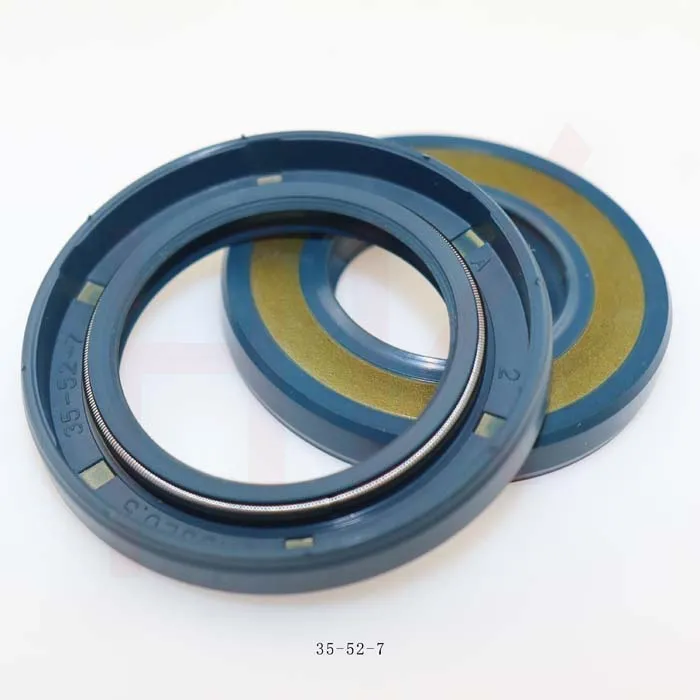ಡಿಸೆ . 05, 2024 10:15 Back to list
2 inch hydraulic cylinder seal
Understanding 2-Inch Hydraulic Cylinder Seals Importance and Maintenance
Hydraulic systems are essential components in various industries, ranging from manufacturing to construction. Among the key elements that ensure the efficiency and reliability of these systems are hydraulic cylinders. Specifically, 2-inch hydraulic cylinder seals play a crucial role in maintaining the integrity and performance of these cylinders. This article delves into the significance of hydraulic cylinder seals, their types, and how to maintain them effectively.
The Role of Hydraulic Cylinder Seals
Hydraulic cylinder seals are designed to prevent fluid leaks and contamination in hydraulic systems. They create a tight seal between the moving parts of the cylinder, ensuring that hydraulic fluid is contained within the cylinder. This containment is vital for generating pressure and transmitting force effectively. When functioning correctly, seals enhance the overall efficiency of hydraulic systems, leading to smoother operation and improved performance.
As they work under high pressure, the quality and appropriateness of seals are paramount. A failure in the sealing system can result in hydraulic fluid leaks, which leads to power loss and can damage the equipment. In addition, fluid leaks can pose environmental hazards and result in increased operational costs due to fluid replacement and downtime.
Types of Hydraulic Cylinder Seals
There are several types of seals used in hydraulic cylinders, with each serving specific functions
1. Rod Seals These are designed to seal the space between the piston rod and the cylinder barrel, preventing the hydraulic fluid from leaking out. They maintain the pressure required to move the piston.
2. Piston Seals Located inside the cylinder barrel, piston seals are responsible for preventing fluid from leaking past the piston. They ensure that hydraulic force is effectively transmitted without loss.
3. Wiper Seals Positioned at the outer end of the cylinder, wiper seals prevent debris and contaminants from entering the cylinder. This is crucial for protecting internal components and extending the life of the hydraulic system.
4. Back-Up Rings Often used in conjunction with primary seals, back-up rings provide additional support to prevent extrusion—the risk of a seal being forced out of its groove under high pressure.
2 inch hydraulic cylinder seal

Each seal type is available in different materials and designs to suit specific applications. Common materials include nitrile rubber, polyurethane, and PTFE, each chosen for its hydrodynamic properties and resistance to wear.
Maintenance of Hydraulic Cylinder Seals
Maintaining hydraulic cylinder seals is essential for ensuring the longevity and reliability of hydraulic systems. Here are some key maintenance practices
1. Regular Inspections Periodic inspections of hydraulic cylinders can identify signs of wear, damage, or contamination. Look for leaks around seals, which can indicate that they are no longer functioning effectively.
2. Proper Lubrication Adequate lubrication of moving parts is crucial in reducing friction and wear on seals. Ensure that the hydraulic fluid is clean and at the appropriate level.
3. Environmental Control Protect hydraulic cylinders from exposure to extreme temperatures and harsh environmental conditions. Use wiper seals to keep dirt and debris away from vulnerable areas.
4. Use the Right Seal When replacing seals, ensure that the new seals are of high quality and are designed specifically for your hydraulic system’s dimensions and pressure requirements.
5. Avoid Over-Pressurization Operating a hydraulic system beyond its rated pressure can lead to premature failure of seals. Always adhere to manufacturer guidelines regarding system pressure.
Conclusion
2-inch hydraulic cylinder seals are a vital component in the performance and safety of hydraulic systems. Understanding their function, types, and the importance of maintenance can help prevent costly breakdowns and enhance operational efficiency. By taking the time to care for these seals, industries can ensure not only the longevity of their hydraulic systems but also a significant reduction in downtime and operational costs. Proper seal management is not just a matter of maintenance; it is a key factor in achieving optimal performance in hydraulic equipment.
-
TCN Oil Seal Metal Ring Reinforcement for Heavy Machinery
NewsJul.25,2025
-
Rotary Lip Seal Spring-Loaded Design for High-Speed Applications
NewsJul.25,2025
-
Hydraulic Cylinder Seals Polyurethane Material for High-Impact Jobs
NewsJul.25,2025
-
High Pressure Oil Seal Polyurethane Coating Wear Resistance
NewsJul.25,2025
-
Dust Proof Seal Double Lip Design for Construction Equipment
NewsJul.25,2025
-
Hub Seal Polyurethane Wear Resistance in Agricultural Vehicles
NewsJul.25,2025
-
The Trans-formative Journey of Wheel Hub Oil Seals
NewsJun.06,2025
Products categories
















